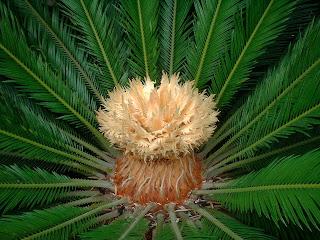Paleontological Palm Problem
 |
| morgueFile/Thea Olsen |
Sago palms, like the Wollemi pine, are irritants to evolutionists. They are found in fossil layers that are presumed to be 250 million years old. And yet, their descendants are found virtually unchanged today. Another story is that they only began diversifying 10 million years ago. Wait, what? Which is it?
Evolutionary biologists, paleontologists and botanists who deal with these palms (as well as fundamentalist evolutionists) presuppose that evolution is a "fact" — some even erroneously call evolution a "law". There should be signs of evolution, yes? No. Creationists do not have these conundrums to negate their theories.
Cycads, also called "sago palms," are cone-bearing plants with long leathery shoots that often adorn dinosaur dioramas. Though there are about 11 living cycad genera, which further divide into about 300 species, many more once existed but are now known only from fossils.
The oldest rock layers that contain cycads are supposedly about 250 million years old. However, in a study published in Science, a group of scientists compared the similarities between cycad DNA sequences and did not find the many DNA differences that should have resulted from a quarter-billion years' worth of mutations and evolution.
Even after applying evolutionary assumptions to make their molecular clock work, most likely including a very slow mutation rate, the researchers' results showed that almost all of today's cycads "only began diversifying 10 million years ago," the study's lead author, Nathalie Nagalingum, told LiveScience.You can read the rest of "'Dinosaur Plant' Evolution Stories Conflict", here.